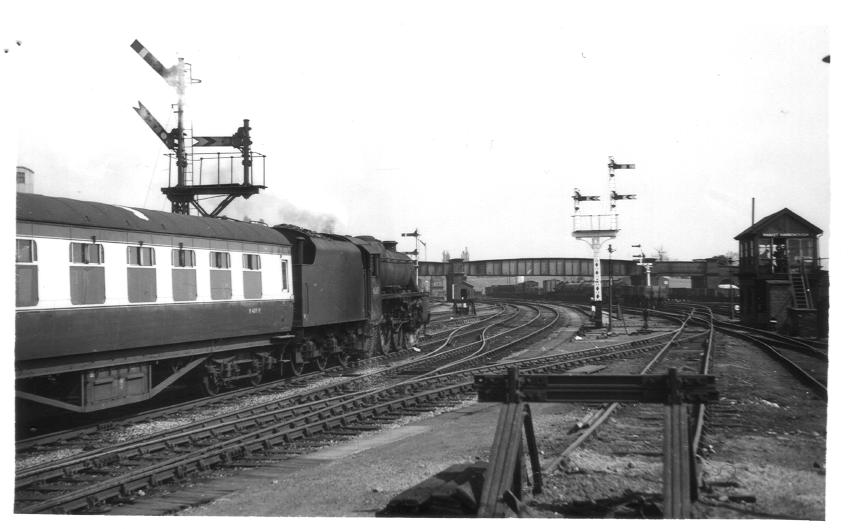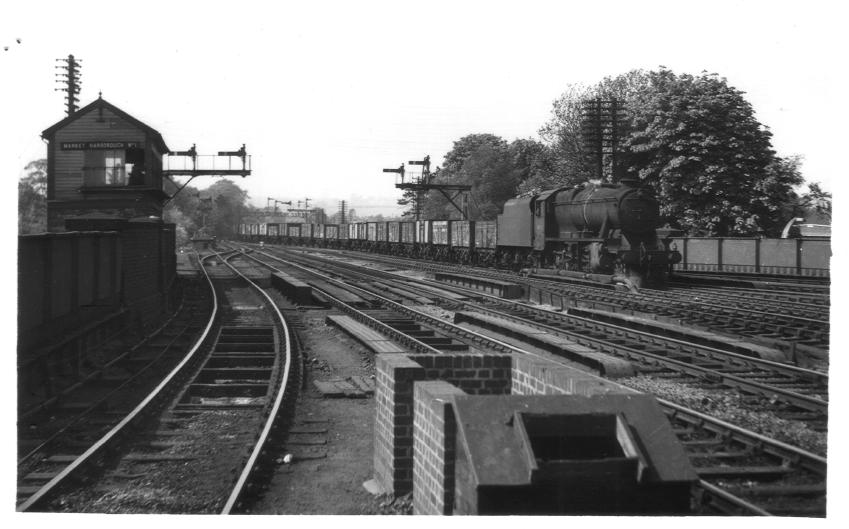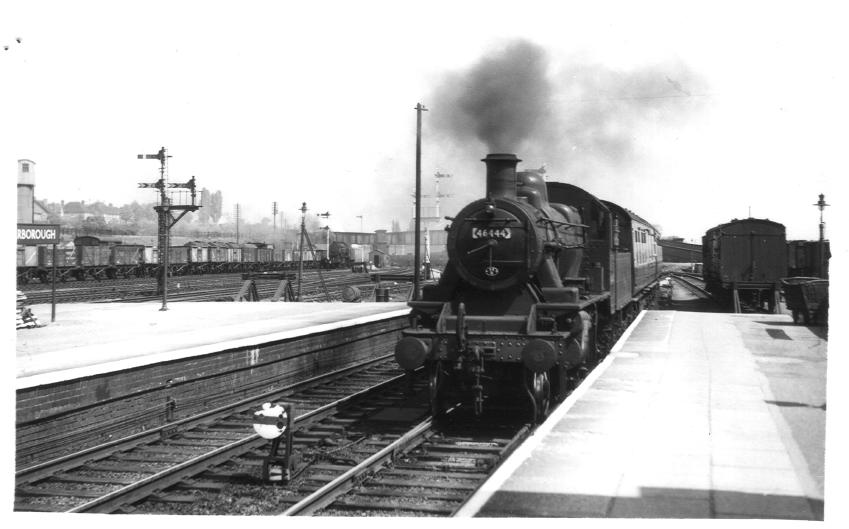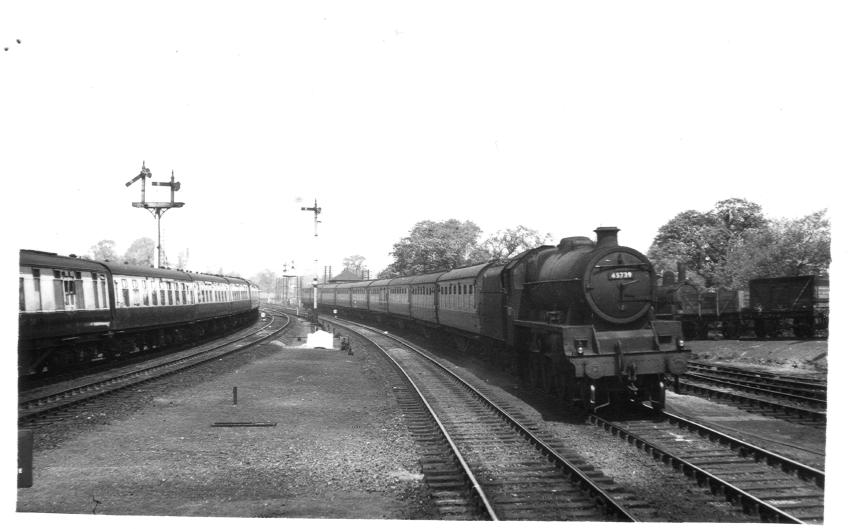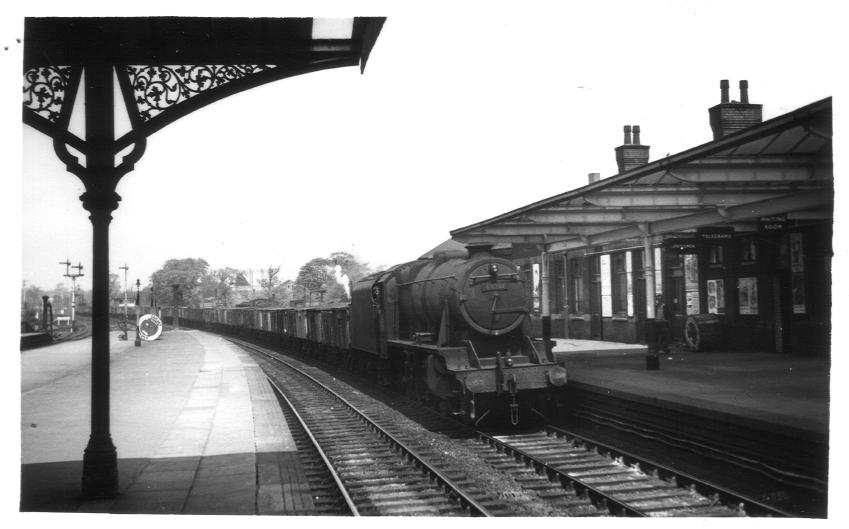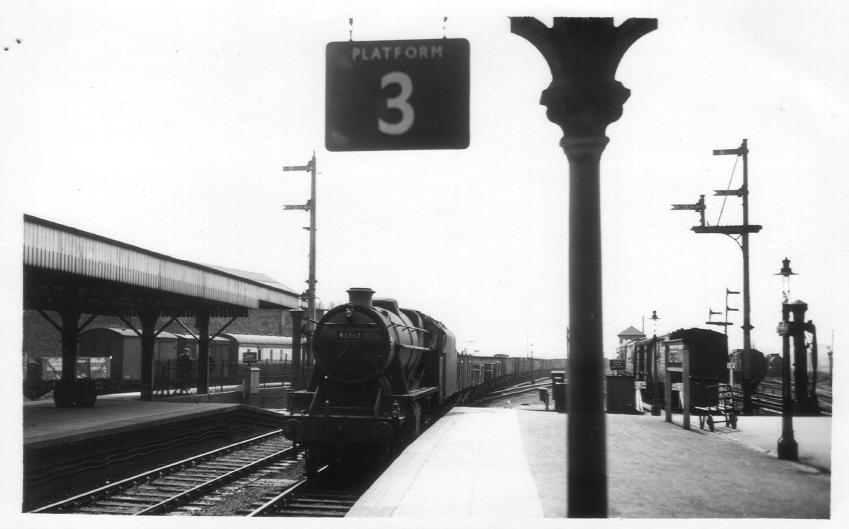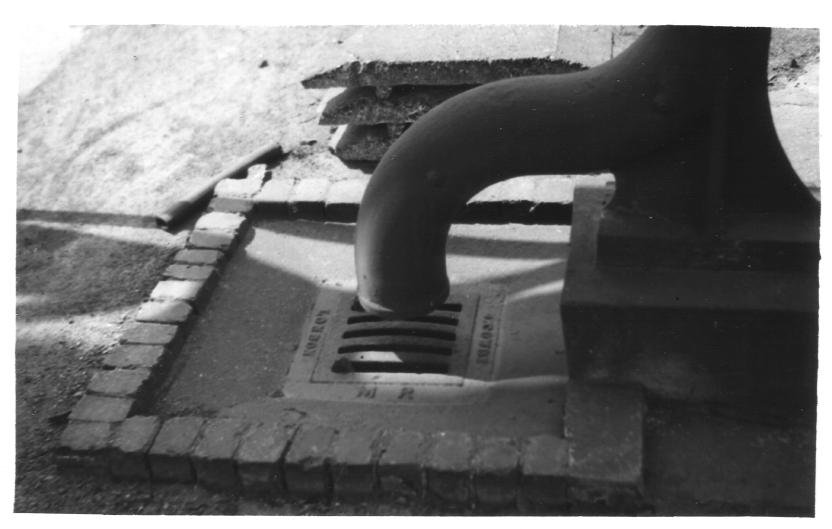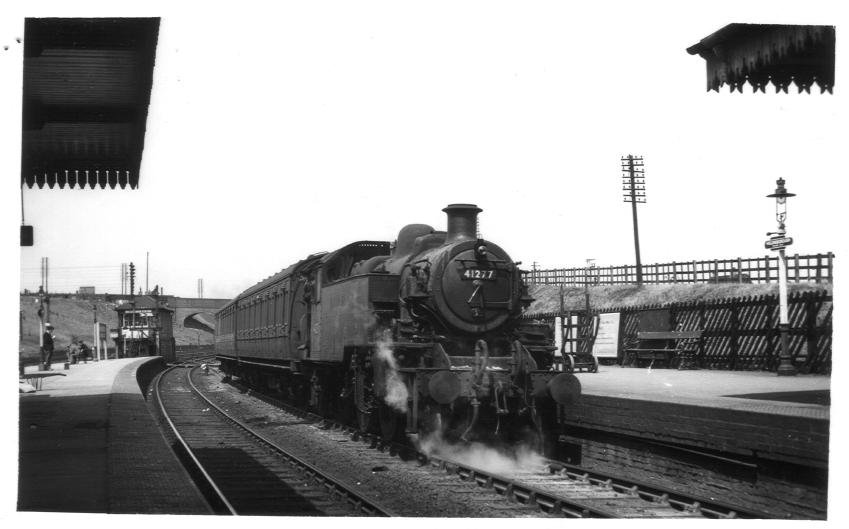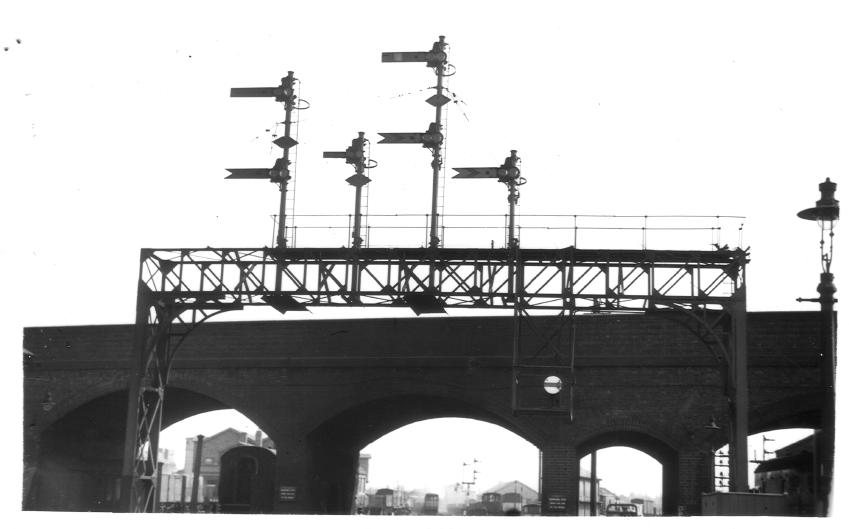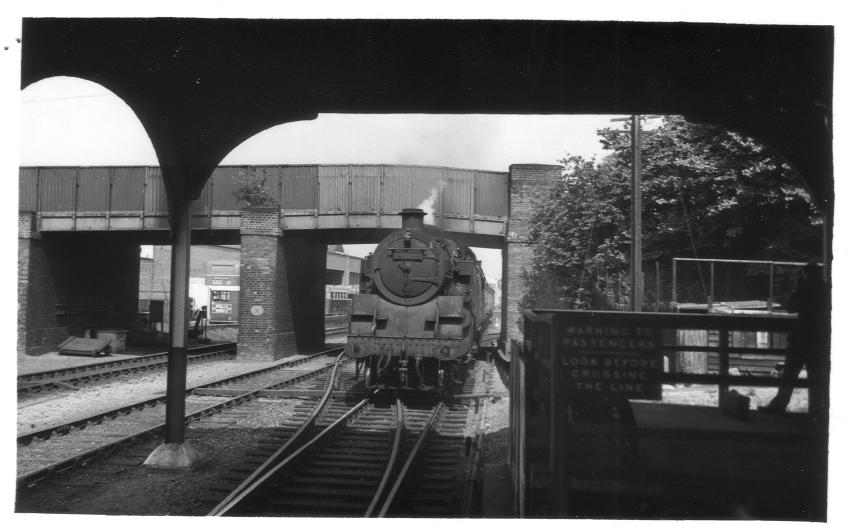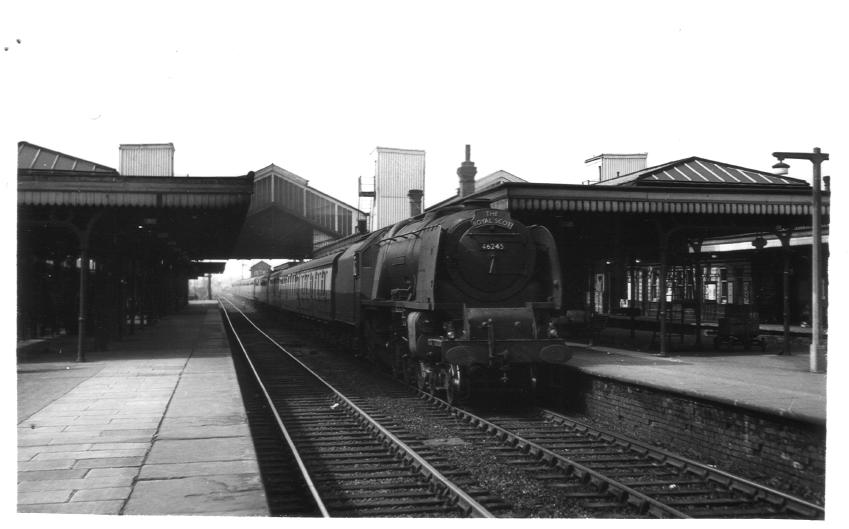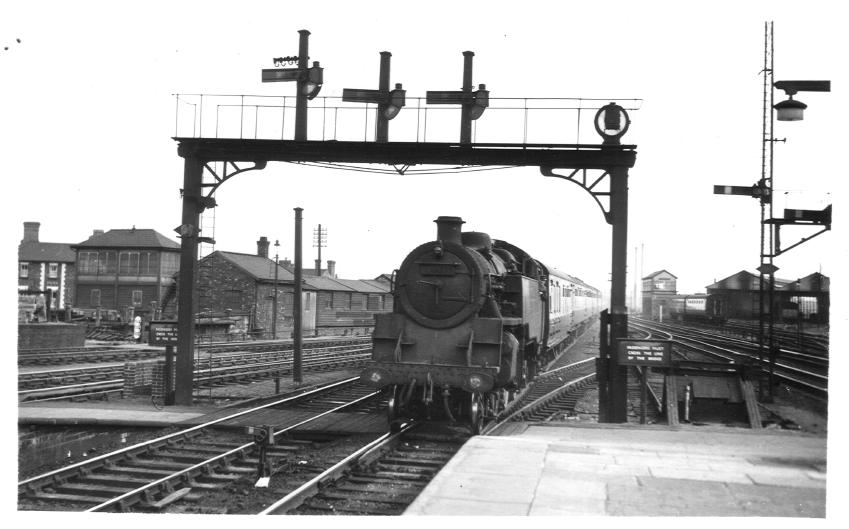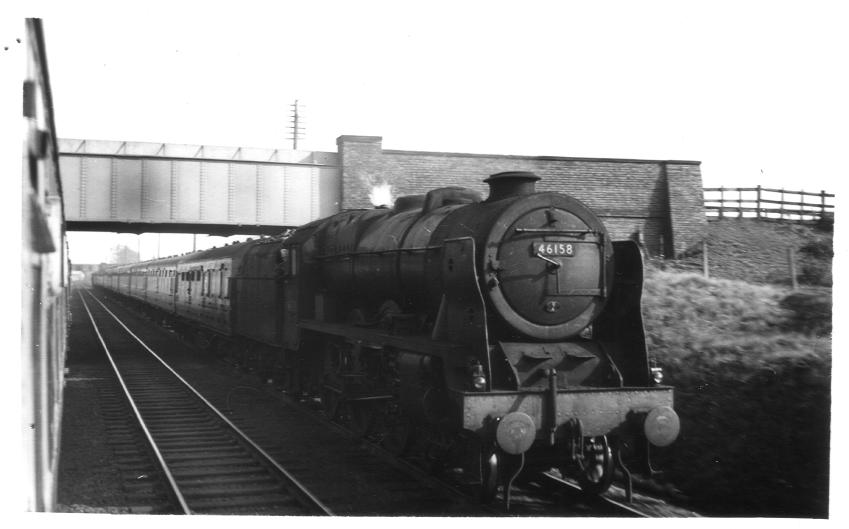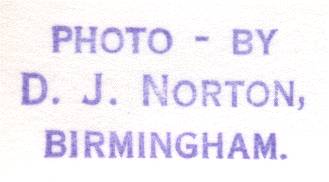
Dad's Day Out - 22/5/56
45387 Leaving Market Harborough Stn - 22/5/56
|
|
|
|
| First stop on this May 1956 day
out is Market Harborough in Leicestershire. 'Black Five' 45387 is departing from the northern end of the station. The box to the right is labelled 'Market Harborough'. Note that the bridge in the distance has since been demolished. |
48149 Market Harborough Stn - 22/5/56
|
|
|
|
| At the southern end of the station, 8F 2-8-0 48149 is heading up a freight train. The box in this picture is labelled 'Market Harborough No.1' |
46444 arr Market Harborough Stn - 22/5/56
|
|
|
|
| Back at the
northern end of the station, Class 2MT 2-6-0 'Ivatt' 46444 is about to
pull in to one of the platforms, possibly pulling a local train? |
45739 Kettering Stn - 22/5/56
|
|
|
|
| Next stop on
the tour is Kettering in the neighbouring county of Northhamptionshire. I think 'Jubilee' 45739, a.k.a. Ulster, is approaching the northern end of the station given the curvature of the tracks. |
48361 Kettering Stn - 22/5/56
|
|
|
|
| The trees
and signals in the distance show that this view is also looking north
with my father having moved further down the platform. Another 8F 2-8-0 (like the one seen at Market Harborough earlier) 48361 is pulling freight through the station. The ornate roof survives today as seen on this picture. |
48362 Kettering Stn - 22/5/56
|
|
|
|
| When I saw
this picture, I got a bit confused... I said, "If we are now at
the southern end of the
station, surely we'd be on platform 2 but we are clearly on platform
3. Have I got things totally wrong or have the platforms been
renumbered?". Thanks to Tim who got in touch with the following
information:- "There was a bay platform at Kettering facing south for the Cambridge line trains. These ended in 1959 and the bay remained for many years, virtually unused except for an early Saturday morning all stations to London served by a Bedford Suburban dmu. Eventually the station was rationalised, and the outside area revamped, the bay was filled in, and the platforms renumbered 1 to 4, instead of being 1 to 5." Regardless of the above, yet another 8F 2-8-0, this time 48362, is pulling freight. |
M.R. Drain Cover, Wellingborough Shed -
22/5/56
|
|
|
|
| Before
reaching Wellingborough Station, a brief stop off at the nearby loco
shed resulted in this shot of an old Midland Railways drain
cover. You can see the promient M R at the front and the word to
the left is clearly LONDON but I can't make out the identification on
the right. Any ideas? |
41277 15A Wellingborough Stn - 22/5/56
|
|
|
|
| This really
should be 'Wellingborough Midland Road' to differentiate from the
London Road station that still existed at the time. Another north looking view with Wellingborough Station box and the road bridge carrying Mill Road both visible in the distance. Class 2MT 2-6-2T 'Ivatt' 41277 has the driver and fireman taking a break in the sunshine! The loco has some strange looking equipment on the front. I asked if this was what Hugh Longworth was referring to when he says that the loco was, "motor fitted for working push-pull trains"? Dave got in touch to explain:jh "The picture shows an Ivatt class 2 tank, 41277 15A Wellingborough Stn. It is fitted with push Pull apparatus enabling auto working. It was built in 1950 at Crewe works and was delivered new to Rhyl Shed, 7D. It had a criminally short life of only 12 years, when it was withdrawn from 27C, Southport Shed week ending 1/12 1962 and put into store there until the following March, when it was scrapped." When I quizzed him further, he went on to explain: "The driver, in most cases is in a driving trailer coach, sometimes called an auto trailer with a set of controls to the loco, thus driving it from a front driving compartment. Some railways had a mechanical rodding operation to the loco, others used air, vacuum or even a system of wires. Either way, the driver was not on the loco when travelling in this mode and it saved on time etc when at terminus stations, the loco didn't need to run round the train. These trains were usually no more than two coaches." He was also kind enough to send a link to an interesting piece on the Gloucestershire Transport History website. |
Gantry S. End of Bedford (Mid) Stn -
22/5/56
|
|
|
|
| As my father
noted that this was the south end of Bedford (Midland) Station, I think
that the road bridge behind the gantry must be carrying Ford End Road. |
80083 arr Bedford (St John) Stn -
22/5/56
|
|
|
|
| The Bedford
(St Johns) Station of my father's time was located to the west of
London Road and it is that road that the bridge is carrying. The
station closed in the 1980's when a replacement was opened
nearby. There are some good pictures and history on Disused
Stations. The loco is Class 4MT 2-6-4T BR Standard 'Class 4 Tank', 80083. I'm intrigued by the canopies over the track. Earlier pictures (c.1914) suggest they are the remnants of a small shed that was later converted to a platform. Very odd... Under the road bridge, it looks like there was a bus depot. I can see the back of a double decker showing service 149 to Bedford. |
46245 Bletchley Stn -
22/5/56
|
|
|
|
| 'Princess
Coronation' class 46245, City of London, pulling the famous Royal Scot
service. I think this view is looking north. |
80038 arr Bletchley Stn -
22/5/56
|
|
|
|
| Rather less exciting than the 'Royal Scot', a second Class 4MT 2-6-4T BR Standard 'Class 4 Tank' for the day, this time 80038 instead of 80083 seen at Bedford. This view is most likely southwards |
46158 nr Wolverton -
22/5/56
|
|
|
|
| My father
obviously couldn't resist taking one more shot, this time from the
train back to Birmingham. Perhaps it was the coincidence of
seeing a 'Royal Scot'
after seeing the 'Royal
Scot'!? Class 7P 4-6-0 'The Loyal Regiment' 46158 is steaming
south, probably to Bletchley. |
 |
 |
